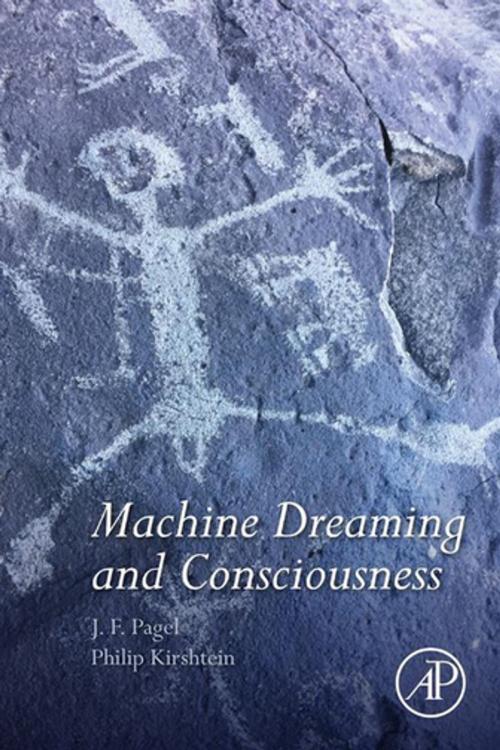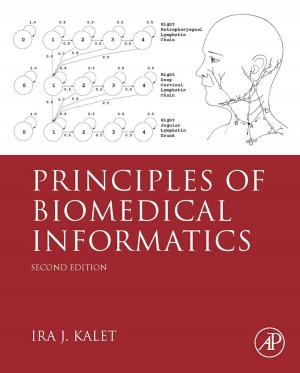Machine Dreaming and Consciousness
Nonfiction, Computers, Advanced Computing, Engineering, Neural Networks, Health & Well Being, Psychology, Cognitive Psychology, Science & Nature, Science| Author: | J. F. Pagel, MS, MD, Philip Kirshtein | ISBN: | 9780128037423 |
| Publisher: | Elsevier Science | Publication: | April 13, 2017 |
| Imprint: | Academic Press | Language: | English |
| Author: | J. F. Pagel, MS, MD, Philip Kirshtein |
| ISBN: | 9780128037423 |
| Publisher: | Elsevier Science |
| Publication: | April 13, 2017 |
| Imprint: | Academic Press |
| Language: | English |
Machine Dreaming and Consciousness is the first book to discuss the questions raised by the advent of machine dreaming. Artificial intelligence (AI) systems meeting criteria of primary and self-reflexive consciousness are often utilized to extend the human interface, creating waking experiences that resemble the human dream. Surprisingly, AI systems also easily meet all human-based operational criteria for dreaming. These “dreams are far different from anthropomorphic dreaming, including such processes as fuzzy logic, liquid illogic, and integration instability, all processes that may be necessary in both biologic and artificial systems to extend creative capacity.
Today, multi-linear AI systems are being built to resemble the structural framework of the human central nervous system. The creation of the biologic framework of dreaming (emotions, associative memories, and visual imagery) is well within our technical capacity. AI dreams potentially portend the further development of consciousness in these systems. This focus on AI dreaming raises even larger questions. In many ways, dreaming defines our humanity. What is humanly special about the states of dreaming? And what are we losing when we limit our focus to its technical and biologic structure, and extend the capacity for dreaming into our artificial creations? Machine Dreaming and Consciousness provides thorough discussion of these issues for neuroscientists and other researchers investigating consciousness and cognition.
- Addresses the function and role of dream-like processing in AI systems
- Describes the functions of dreaming in the creative process of both humans and machines
- Presents an alternative approach to the philosophy of machine consciousness
- Provides thorough discussion of machine dreaming and consciousness for neuroscientists and other researchers investigating consciousness and cognition
Machine Dreaming and Consciousness is the first book to discuss the questions raised by the advent of machine dreaming. Artificial intelligence (AI) systems meeting criteria of primary and self-reflexive consciousness are often utilized to extend the human interface, creating waking experiences that resemble the human dream. Surprisingly, AI systems also easily meet all human-based operational criteria for dreaming. These “dreams are far different from anthropomorphic dreaming, including such processes as fuzzy logic, liquid illogic, and integration instability, all processes that may be necessary in both biologic and artificial systems to extend creative capacity.
Today, multi-linear AI systems are being built to resemble the structural framework of the human central nervous system. The creation of the biologic framework of dreaming (emotions, associative memories, and visual imagery) is well within our technical capacity. AI dreams potentially portend the further development of consciousness in these systems. This focus on AI dreaming raises even larger questions. In many ways, dreaming defines our humanity. What is humanly special about the states of dreaming? And what are we losing when we limit our focus to its technical and biologic structure, and extend the capacity for dreaming into our artificial creations? Machine Dreaming and Consciousness provides thorough discussion of these issues for neuroscientists and other researchers investigating consciousness and cognition.
- Addresses the function and role of dream-like processing in AI systems
- Describes the functions of dreaming in the creative process of both humans and machines
- Presents an alternative approach to the philosophy of machine consciousness
- Provides thorough discussion of machine dreaming and consciousness for neuroscientists and other researchers investigating consciousness and cognition















